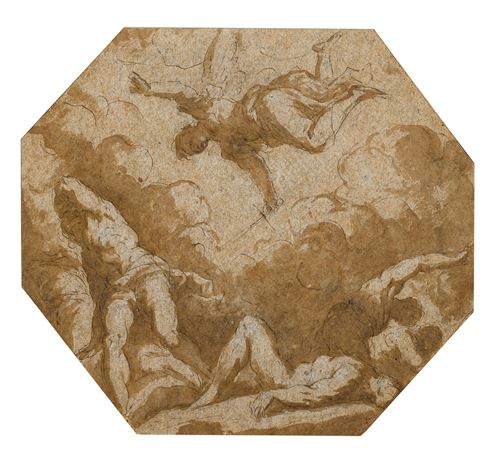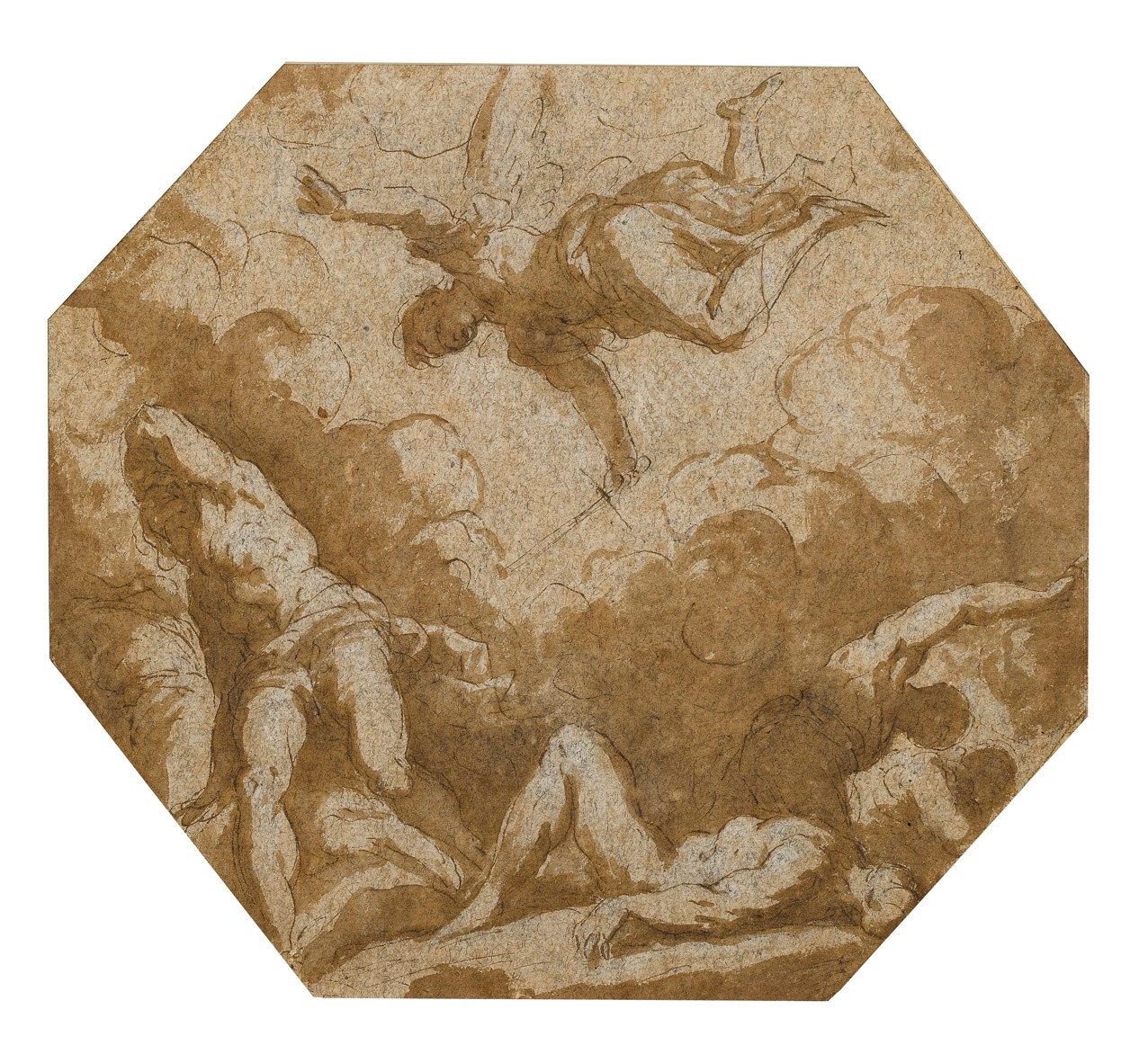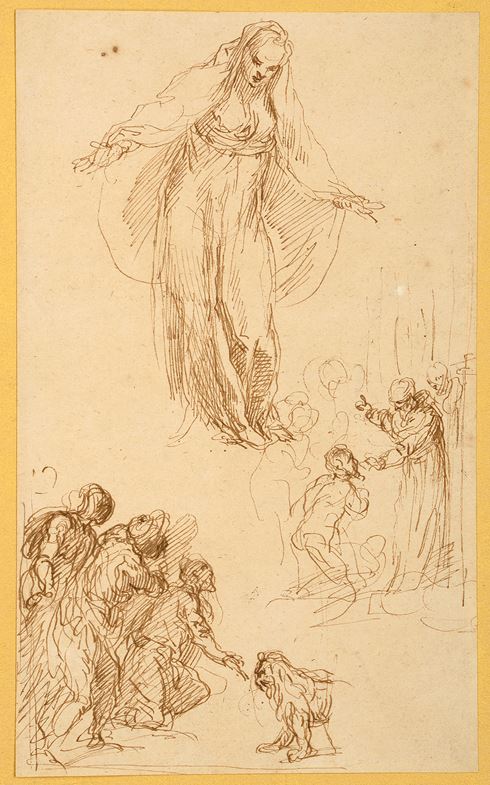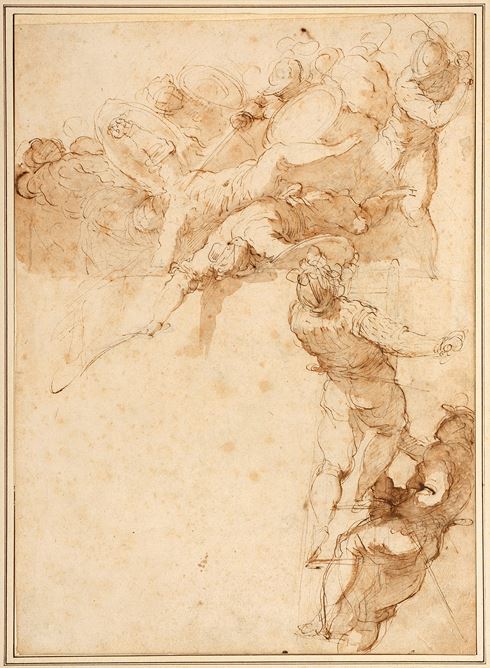
Jacopo PALMA GIOVANE
Venice 1548 - Venice 1628
Biography
Known as Palma Giovane to distinguish him from his great-uncle, the painter Palma Vecchio, Jacopo Negretti studied in Pesaro and Urbino, where he gained the financial support of Guidobaldo II della Rovere, Duke of Urbino. The Duke sent him to complete his studies in Rome, where he spent several years, making copies after the frescoes of Michelangelo and Polidoro da Caravaggio. On his return to Venice in 1573 he may have worked in the studio of Titian, completing the Pietà left unfinished at the master’s death in 1576. To the influence of Titian was added that of Tintoretto and Veronese, which Palma combined with his experiences of Roman Mannerism to create what was to be his own distinctive, painterly style.
His first important commission came in 1578, when he provided three paintings for the ceiling of the Sala di Maggior Consiglio in the Palazzo Ducale in Venice. A prolific painter and draughtsman, Palma Giovane enjoyed a long career and received a large number of important commissions in Venice, particularly after the deaths of Tintoretto and Veronese. As well as providing altarpieces and ceiling paintings for numerous Venetian churches, Palma painted a cycle of pictures for the Ospedaletto dei Crociferi between 1583 and 1592 – a rare example in Venice of an entire cycle of paintings entrusted to one artist alone - and continued to contribute to the extensive redecoration of the various rooms of the Palazzo Ducale. He was also a talented portrait painter, although only a handful of examples are known today.
By the beginning of the 17th century Palma Giovane was firmly established as the leading painter in Venice, receiving commissions from patrons throughout Italy and beyond, such as the Emperor Rudolf II in Prague. He had a large and busy workshop, and more than six hundred paintings attributable to him or his studio are known.




